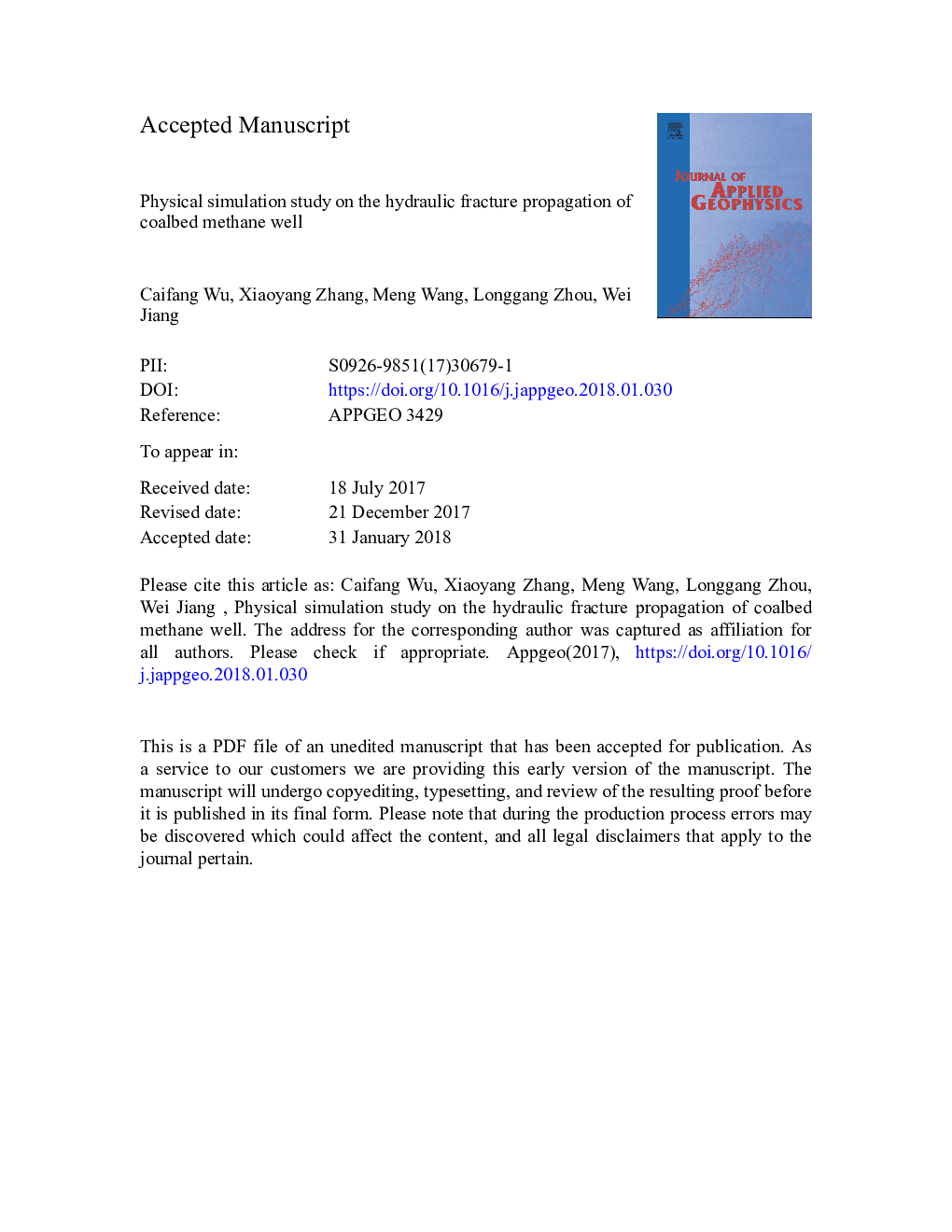| Article ID | Journal | Published Year | Pages | File Type |
|---|---|---|---|---|
| 8915499 | Journal of Applied Geophysics | 2018 | 27 Pages |
Abstract
As the most widely used technique to modify reservoirs in the exploitation of unconventional natural gas, hydraulic fracturing could effectively raise the production of CBM wells. To study the propagation rules of hydraulic fractures, analyze the fracture morphology, and obtain the controlling factors, a physical simulation experiment was conducted with a tri-axial hydraulic fracturing test system. In this experiment, the fracturing sample - including the roof, the floor, and the surrounding rock - was prepared from coal and similar materials, and the whole fracturing process was monitored by an acoustic emission instrument. The results demonstrated that the number of hydraulic fractures in coal is considerably higher than that observed in other parts, and the fracture morphology was complex. Vertical fractures were interwoven with horizontal fractures, forming a connected network. With the injection of fracturing fluid, a new hydraulic fracture was produced and it extended along the preexisting fractures. The fracture propagation was a discontinuous, dynamic process. Furthermore, in-situ stress plays a key role in fracture propagation, causing the fractures to extend in a direction perpendicular to the minimum principal stress. To a certain extent, the different mechanical properties of the coal and the other components inhibited the vertical propagation of hydraulic fractures. Nonetheless, the vertical stress and the interfacial property are the major factors to influence the formation of the “T” shaped and “å·¥” shaped fractures.
Related Topics
Physical Sciences and Engineering
Earth and Planetary Sciences
Geophysics
Authors
Caifang Wu, Xiaoyang Zhang, Meng Wang, Longgang Zhou, Wei Jiang,
